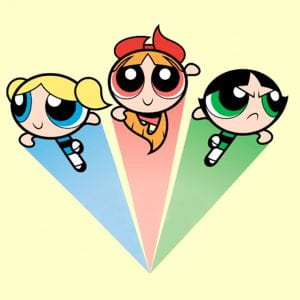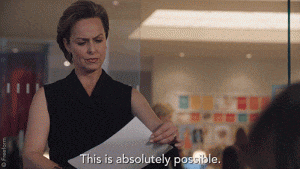CINEMATOGRAPHY in Scandal

Camera Crew with Kerry Washington on the set of ScandalS
Season 1, Episode 6, of Scandal dives into the story of how Olivia and Fitz’s notorious affair began on the campaign trail. The episode is the most fitting to study cinematography within the show because very distinct cinematic strategies and elements are used to tell the backstory and current status of the relationship.
The show is shot very methodically and has a few captivating cinematic characteristics I would like to specifically point out. For example, opening scenes and occasional transitions are shot with pans through the background setting or behind an unfocused blocking object before focusing on characters. In addition, Scandal is filmed with extremely close-up shots. A large majority of the scenes in this episode and others are purely facial. Scenes with two or fewer people hardly ever show below the shoulders of the actors.
Another factor in the cinematography and filming direction of the show is the length of takes. The most notable length of cuts are the very long scenes of just Olivia and Fitz. This episode, in particular, emphasizes their alone time through lengthy takes with only their faces in the frame. For example, twice in the episode, Fitz asks for just “one minute” of silence with Olivia and the cameras grant him both of those moments in full. The only short takes with these two characters are during sensual scenes. During the sex scene, the camera spends very little time on each frame and there are nearly a hundred different takes within the two-minute scene. The intro itself is a flash of multiple images within two seconds with a clicking noise, which imitates the paparazzi cameras. I believe the directors wanted to stay true to the theme of the theme of the show, its namesake, scandal. The longer scenes with Olivia and Fitz are more romantic and pure. Meanwhile, the sex scene being more inappropriate (since Fitz is married) is much shorter and filmed like the intro, insinuating the scandal that it is.
In regards to lighting, the show uses it to reveal mood and dictate morality. Olivia and Fitz’s scenes are always dark with a few warm colors, indicating romance and a sensual tone. During interviews, debates, and other campaign events, the scenes are very bright. I believe this is to show how the darkness attempts to hide the affair, but the lights used during the campaign events follow the old narrative that where there is light, there is truth. Thus, a brightly lit campaign demonstrates a candidate of truth. However, the darkness tries to hide reality.
The use or lack of color may be the most distinguished cinematic element in the episode. The directors choose to desaturate the frames in order to reveal flashback moments. This specific episode, “The Trail” explores the Grant campaign trail of two years prior and details the evolution of Olivia and Fitz’s affair. Therefore, the lack of color in certain scenes is what tells viewers that this happened previously.



